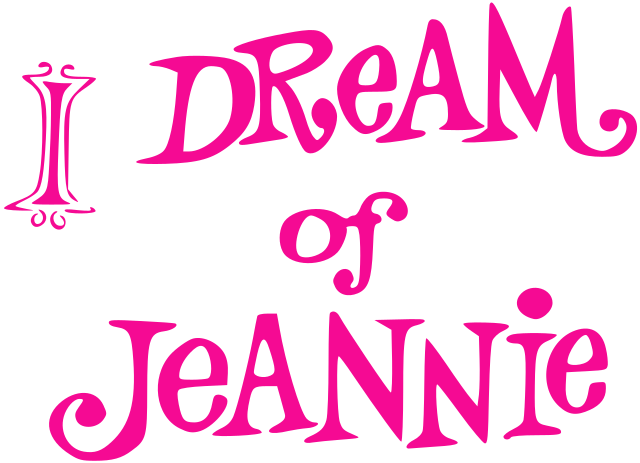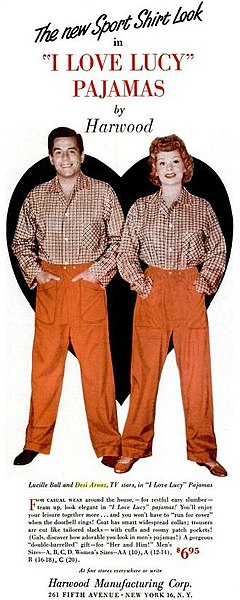Television from the 1960s left a lasting impact on pop culture and continues to captivate audiences today. The decade’s classic shows provided groundbreaking entertainment and unique perspectives that still resonate with viewers. These timeless series remain popular because of their compelling characters, engaging storylines, and the nostalgic value they bring.
Shows like “Star Trek” and “The Andy Griffith Show” offer a glimpse into the past while still feeling relevant and entertaining. The futuristic adventures of “Star Trek” introduced audiences to new worlds and cultures, and its influence can be seen in today’s TV shows and movies. Meanwhile, “The Andy Griffith Show” presents heartwarming tales from the mythical town of Mayberry, showcasing the values and humor that still appeal to modern viewers.
Western classics like “Gunsmoke” and “Bonanza” transported audiences to the rugged landscapes of the Old West. These series provided a mix of adventure and moral lessons that remain engaging. The enduring popularity of these shows highlights how the essence of 1960s television continues to hold up, offering both historical insights and pure entertainment.
The Emergence of Sitcoms in the 1960s
Sitcoms in the 1960s became a cornerstone of American television, shaping the comedy landscape with unique storytelling and relatable characters. These shows often mirrored societal changes, using humor to address family dynamics and social commentary.
The Cultural Impact of Sitcoms
The 1960s were a transformative era for television, and sitcoms became a key part of this change. They reflected and influenced society by tackling various issues subtly embedded in comedic plots. Shows like The Andy Griffith Show and Bewitched not only entertained but also offered commentary on everyday life, making them relatable to a broad audience.
Sitcoms highlighted evolving family dynamics, often showcasing non-traditional families and friendships. For example, “The Andy Griffith Show” depicted a single father raising his son, which was uncommon for the period. These shows also brought up broader social themes, fostering conversations about community, gender roles, and cultural norms.
Defining the Sitcom Genre
The 1960s sitcoms were characterized by their unique blend of humor and life lessons. These shows combined witty dialogue with situational comedy, creating scenarios that were both entertaining and thought-provoking. I Dream of Jeannie and Gilligan’s Island are prime examples of sitcoms that used fantastical and whimsical settings to explore everyday human interactions and problems.
Another key feature was the focus on family dynamics. Sitcoms like The Dick Van Dyke Show and My Three Sons centered on family relationships, reflecting and sometimes challenging the ideals of the traditional family unit. The use of humor to tackle serious topics made these shows timeless, allowing them to remain relevant for future generations.
Through their innovative storytelling and relatable characters, 1960s sitcoms set the standard for television comedy, leaving a lasting impact that can still be seen in today’s shows.
Iconic 1960s Sitcoms and Their Legacy
The 1960s birthed several iconic sitcoms that left a lasting influence on television. These shows often addressed cultural norms and introduced new storytelling techniques. Here, we explore some key examples and their impact.
I Love Lucy and the Role of the Housewife
“I Love Lucy” was a groundbreaking sitcom that not only showcased comedy but also redefined the role of the housewife on TV. Lucille Ball starred as Lucy Ricardo, a suburban housewife with big dreams of stardom.
Lucy’s antics and schemes, often trying to break into show business, broke the mold of the passive housewife. The show’s success highlighted the power and agency of women in comedy, making it a pioneer in representing women’s roles on television.
The Andy Griffith Show: Mayberry’s Lasting Appeal
“The Andy Griffith Show,” set in the fictional town of Mayberry, focused on Sheriff Andy Taylor and his community. The simple, small-town life depicted in the show resonated with viewers.
The calm and wise Sheriff Taylor, played by Andy Griffith, provided a role model of fairness and kindness. The dynamic between him and his bumbling deputy, Barney Fife, added humor and heart. Mayberry’s charm and lessons in morality continue to provide a comforting and nostalgic escape.
The Dick Van Dyke Show: A Behind-the-Scenes Comedy
“The Dick Van Dyke Show” offered viewers a look into the life of comedy writer Rob Petrie, played by Dick Van Dyke. The show was known for its clever, behind-the-scenes look at TV production.
As a comedy writer for the fictional “Alan Brady Show,” Rob’s work-life balance and interactions with his wife, Laura, highlighted the joys and stresses of both home and workplace. The witty dialogue and strong performances made it a standout show that portrayed the evolving dynamics of modern family life.
Bewitched: Magic in the Suburbs
“Bewitched” brought a unique twist to the traditional suburban setting with its portrayal of a magical family. The show starred Elizabeth Montgomery as Samantha, a witch married to a mortal, Darrin.
Samantha’s magical powers, often used to resolve domestic challenges, created a charming blend of fantasy and everyday life. The show subtly tackled issues of power and identity in the context of their mixed-marriage, making it much more than just a whimsical comedy.
Get Smart: Satire and Espionage
“Get Smart,” created by Mel Brooks and Buck Henry, was a satirical take on the spy genre. Starring Don Adams as the bumbling secret agent Maxwell Smart, the show blended slapstick comedy with clever satire.
As an agent for CONTROL, Max’s antics and catchphrases, like “Would you believe…,” became iconic. The show mocked the Cold War espionage tropes and provided social commentary while still delivering laughs. Its inventive humor and clever writing left a lasting impression on the sitcom genre.
Adventure and Drama: The Other Side of the ’60s Television
The adventure and drama genres of the 1960s delivered some landmark television shows that explored supernatural elements and realistic depictions of war. These shows kept viewers engaged with their unique storytelling and powerful themes.
The Twilight Zone: A Foray into the Supernatural
The Twilight Zone stands as one of the most iconic anthology series of the 1960s. Created by Rod Serling, it delved into various supernatural and science fiction themes. Each episode presented a self-contained story with a twist ending that left viewers pondering long after the episode ended.
It wasn’t just about ghosts or aliens; the series often tackled social issues such as racism, war, and human nature. The show’s ability to mix thought-provoking themes with eerie storytelling ensured it remained memorable long after its original broadcast.
M*A*S*H: War and Its Realities
Set during the Korean War, M*A*S*H offered a unique blend of drama and dark comedy. The show focused on the lives of the medical staff stationed at the 4077th Mobile Army Surgical Hospital. Through its engaging characters and storylines, it provided a poignant look at the effects of war on individuals and society.
M*A*S*H wasn’t afraid to address serious issues such as the ethics of war and the human cost of conflict. This approach set it apart from other war dramas, allowing it to resonate deeply with viewers. The mix of humor and drama made it both entertaining and profoundly impactful.
Progressive Themes and Racial Representation
In the 1960s, several TV shows took bold steps to address progressive themes and racial representation. These shows played a key role in shaping the cultural landscape.
Star Trek was groundbreaking with its diverse crew, including Uhura, one of the first Black women in a major TV role. This inclusion highlighted racial equality and paved the way for future representation in science fiction.
Another significant show, I Spy, featured Bill Cosby as a co-lead, marking one of the first times a Black actor held a prominent position in a TV series. This was a major step toward inclusive casting and depicting Black characters in non-stereotypical roles.
The Addams Family brought different social norms to the forefront. The show’s portrayal of a loving, unconventional family challenged traditional family dynamics and encouraged acceptance of diversity.
Julia, starring Diahann Carroll, was unique for representing a Black single mother in a leading role. This show dealt with issues like race and gender, focusing on the life of a professional Black woman.
Lastly, Mission: Impossible included Greg Morris as Barney Collier, showcasing a Black character in an intelligent and skilled role. This provided viewers with a positive representation of Black professionals.
These shows didn’t just entertain; they offered social commentary and pushed for awareness and progress in racial and social issues. Their influence can still be seen in today’s television landscape.
The Evolution of Animated Series
The 1960s brought a unique blend of animated shows, each offering distinct storytelling and artistry. Among them, “The Flintstones” stands out for its innovative approach and lasting impact on TV animation.
The Flintstones: From Stone Age to Primetime
“The Flintstones,” created by Hanna-Barbera, debuted in 1960. It is widely recognized as the first prime-time animated TV show. The series depicted a humorous take on a prehistoric family, integrating modern-day issues and scenarios in a Stone Age setting.
Fred Flintstone, the show’s main character, was modeled after Ralph Kramden from “The Honeymooners.” The show became a cultural phenomenon, bringing animated series to a broad audience.
Its success paved the way for future animated prime-time sitcoms. With memorable catchphrases like “Yabba Dabba Doo!” and an unforgettable theme song, “The Flintstones” left a lasting legacy in the world of animation.
TV Show Revival and Streaming Era
Many classic TV shows from the 1960s have found new life through reboots and streaming services. These platforms have made it easier for audiences to access beloved shows and introduced them to new generations.
Classic Shows in the Streaming Landscape
Streaming platforms like Paramount+, Netflix, Hulu, Amazon Prime, and Disney+ carry a range of classic TV shows. Paramount+ offers The Twilight Zone and I Love Lucy, while Amazon Prime streams The Brady Bunch and The Andy Griffith Show.
Max features The Nanny and The West Wing. Hulu includes Cheers, The Golden Girls, and Hill Street Blues. This variety ensures that audiences can easily access their favorite classics and discover new ones.
Classic TV shows are also being rebooted, with successful examples like Get Smart, bringing nostalgic elements to modern viewers. Streaming platforms have played a crucial role in reviving and maintaining the legacy of these shows, making them accessible to both old fans and new audiences.






